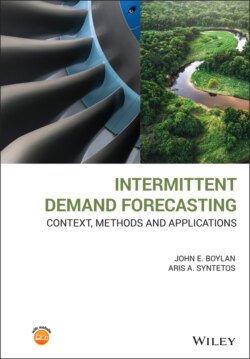Читать книгу Intermittent Demand Forecasting - John E. Boylan - Страница 48
2.5 Overview of Stock Rules
ОглавлениеBefore we review stock rules, it is important to revisit the concept of inventory position. As discussed in Section 2.4, the inventory position is defined by taking the stock on hand, and adding any stock on order, and subtracting any backorders.
The opportunity of backordering demand is not always present. In retailing, for example, the lack of availability of an item usually leads to lost sales or sales of a substitutable product. Modelling ‘lost sales’ is far more difficult than assuming that demand may be backordered. This is because when customers are not willing to wait for their demand to be satisfied in the future, the amount of sales being lost is very hard to estimate. As we discussed in the previous chapter, sales are often used as a proxy for demand, when lost sales are not known. In a business‐to‐business context, where there is a record of the amount of items requested by the customer, lost sales will be known. However, these customers will often be willing to wait. So sales will not be lost, although there will be penalties that need to be paid for delaying the delivery of orders, and eventual loss of some customers, or adverse effects on their goodwill.
The measurement of the service level is affected by whether demand can be backordered or not. Achieved service levels reflect how often, or how much, demand is satisfied by the stock on hand, discussed in more detail in the next chapter. When sales are lost, the greater the uncertainty of the magnitude of that loss, the less clear the picture we have on the service our customers receive. Please note that service does not have any quality‐related connotations in this book. It refers solely to availability of products.
In general, and unless we refer to the retailing sector, the case of backorders is far more relevant than the case of lost sales. The remainder of our discussion on inventory modelling, and its interface with forecasting, is focused on the case of backordering demand.
